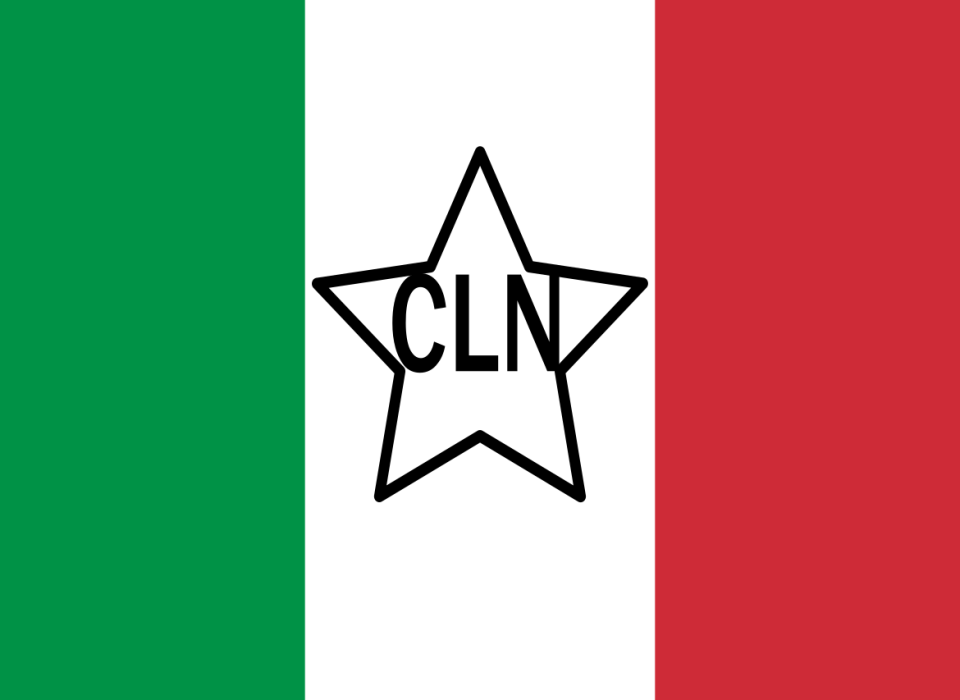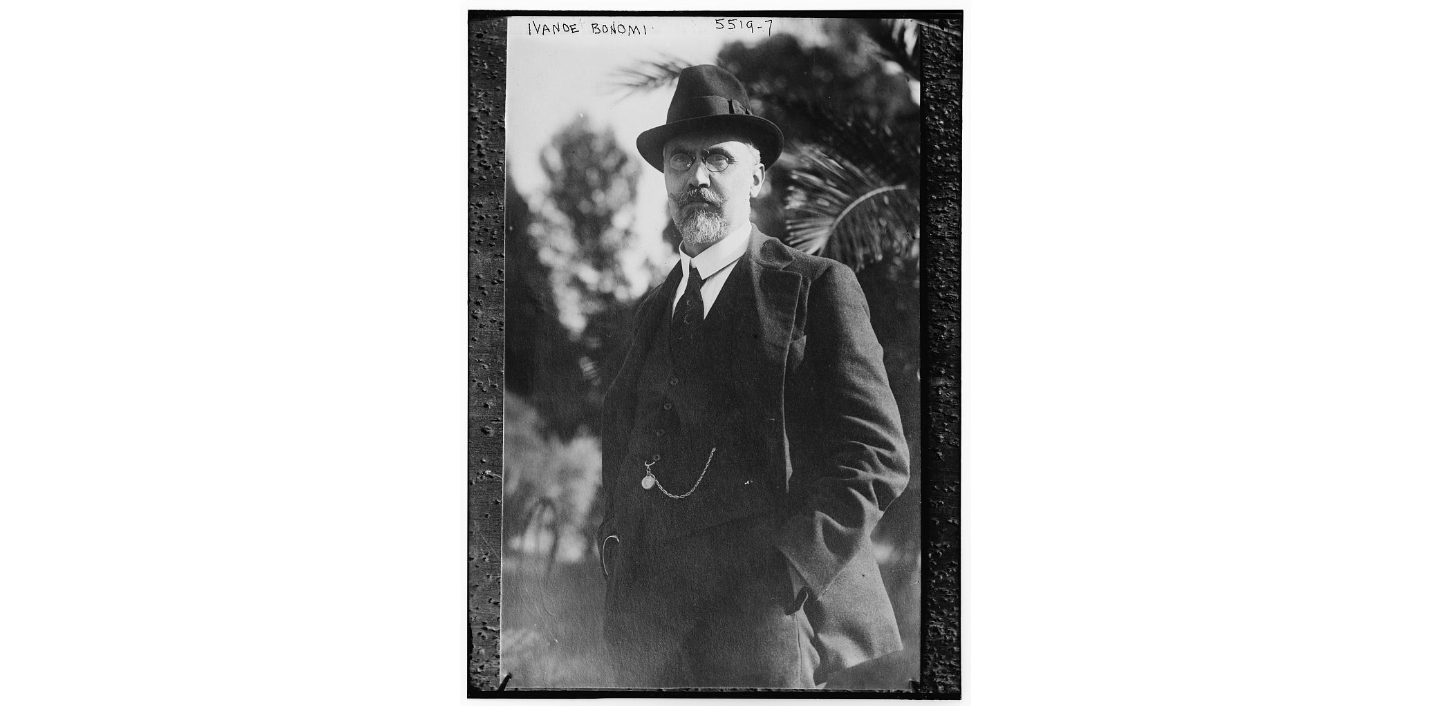Top Photo: Flag of the Italian Committee of National Liberation. Courtesy of Wikimedia Commons.
Although really a palace coup, the ouster, arrest, and imprisonment of Benito Mussolini in late July 1943 was something to celebrate. After nearly 21 years in power, the Mussolini dictatorship had come to the inglorious end it deserved. With fighting between Allied and Italo-German forces still raging in Sicily at that moment, the anti-Fascist opposition in Italy sensed its best opportunity.
Some of these elements, especially in the Italian workers’ movement, had fought Mussolini since the early 1920s. Despite King Victor Emmanuel III’s appointment of Mussolini as Prime Minister in October 1922, socialists, communists, anarchists, and various types of trade unionists battled the Fascists in the streets and desperately tried to protect their institutions and organizations. They continued to do so after the murder of the moderate socialist Giacomo Matteotti by Mussolini’s thugs in June 1924. When Mussolini succeeded in consolidating power and creating something more akin to a one-party state in 1926, these anti-Fascists were imprisoned (like Italian Communist Party leader Antonio Gramsci) or placed under house arrest (in the case of the aging anarchist Errico Malatesta). Others, like the trade unionist Vittorio Foa, went into hiding (he was eventually arrested and imprisoned by Fascist authorities) or were placed in Confino (domestic exile), the punishment handed down to writer Carlo Levi. Finally, some like Carlo Rosselli, founder and key theorist of the Justice and Liberty movement (created in 1929), a group of liberals and moderate socialists, and Palmiro Togliatti, head of the Communist Party, found refuge outside of Italy—Rosselli in France, Togliatti in the Soviet Union.
Outside of Italy, Mussolini’s adversaries did not relent in the struggle against him. In the United States, the formidable Italian-born anarcho-syndicalist Carlo Tresca exposed and contested attempts to win support for the Fascist regime among Italian Americans, particularly in New York City. A small number of Italians, such as the astonishing Ilio Barontini, journeyed in 1939 to Ethiopia, to battle Mussolini’s occupation of that country. More than 3,000 Italians joined the International Brigades and fought against the anti-Republican troops of Francisco Franco as well as their own countrymen deployed to Spain by Mussolini to back the Nationalists. They helped inflict a humiliating defeat on Fascist troops at the Battle of Guadalajara in March 1937 (Barontini was one of this victory's heroes).
In general, though, these were very dark times for Italian anti-Fascists. Addis Ababa, the capital of Ethiopia, fell to the Italian army in May 1936. Gramsci, after writing a series of “prison notebooks” that revolutionized Marxist thought (his concept of hegemony alone has generated far-flung debates) once they were published in the immediate postwar period, died from the effects of his imprisonment in April 1937. Less than two months later, Carlo Rosselli, who had fought in the Spanish Civil War, was murdered in France along with his brother at the behest of the Mussolini regime. Republican Spain would be overrun by Franco, with considerable support from Mussolini and Adolf Hitler in April 1939. The Fascist regime celebrated its occupation of Albania that same month. All the while, Mussolini drew closer to Hitler, signing the Pact of Steel with the Nazi dictator in May 1939 (this agreement augmented the Rome-Berlin Axis arrangements between the two nations in place since 1936). In late September 1940, anti-Fascists inside and outside of Italy watched Mussolini dispatch his son-in-law, Count Galeazzo Ciano, to Berlin to endorse the Tripartite Pact with Germany and Imperial Japan.
Mussolini and the Onset of Military Catastrophe
The cascade of disasters that followed Mussolini’s entry into World War II made possible a resurgence of anti-Fascism in Italy. Whether in North or East Africa, southern France, or Greece, horrendous setbacks ensued for the Italian military in 1940–42. In the Soviet Union, Italian forces endured a bloodbath and were pulled out after Stalingrad. Many young people turned against the war—and against the dictator in Rome who dragged Italy into it. And they were not the only ones: Some conservatives, who had once supported Mussolini, became more and more open to a change at the top.
The March 1943 strike by workers at the Fiat Mirafiori factory in Turin served as a crucial portent. Over the next several months, discontent with the Fascist regime now metamorphosed into open opposition. The catastrophic setbacks in the spring and summer of 1943—the surrender of Axis forces in Tunisia in mid-May, the launching of Operation Husky in Sicily on July 9, and the first Allied bombing raid on Rome on July 19—sealed the fate of the Mussolini dictatorship. On the night of July 24–25, the Fascist Grand Council voted no-confidence in Mussolini, followed by his sacking at the hands of Victor Emmanuel and replacement by Marshal Pietro Badoglio. Mussolini remained a prisoner until a raid ordered by Hitler and led by Otto Skorzeny freed him on September 12. For the remainder of his life, the world’s first Fascist dictator would be reduced to a puppet figure, leading his so-called Italian Social Republic in northern Italy with a shrinking, if still fanatical, group of adherents, kept in place by the military might of Nazi Germany.
Witnessing Mussolini’s fall in late July, anti-Fascists quickly assembled as a Committee of Opposition. This had been abetted by the release of prisoners from Mussolini’s jails. Ivanoe Bonomi was the pivotal figure in the creation of the Committee. Approaching his 70th birthday that summer, Bonomi, a moderate socialist, possessed a wealth of political experience. Having already worked in multiple government ministries after World War I, he served as Prime Minister for a period in 1921–22. He saw his hopes for his country dashed by Mussolini’s triumph. For years, Bonomi withdrew from politics. It was in 1942 when he started to meet with anti-Fascists active again inside Italy.
In June 1943, Bonomi had secretly urged Victor Emmanuel to remove Mussolini as Prime Minister, insert Badoglio in his place, and condemn Italy’s alliance with Hitler. Two of those three things occurred. Badoglio soon initiated clandestine talks with the Allies to take Italy out of the war while pledging to Berlin unwavering support for the Axis.
As August passed and Sicily fell to the Allies, Bonomi faced pressure within the Committee to stand against Badoglio. Many of his comrades understandably had no love for the former chief of the general staff who had been a card-carrying Fascist and worked so closely with Mussolini for years. Why should they trust this reactionary or recognize his leadership? The Committee called on Badoglio to come to terms with British Prime Minister Winston Churchill and US President Franklin D. Roosevelt. Alarmed by the expansion under Badoglio’s nose of the German armed forces’ presence on the Italian Peninsula, it demanded the arming of the Italian people. The Communists, an essential part of the Committee, could count on the Action Party (which grew out of Justice and Liberty) and the newly created Italian Socialist Party of Proletarian Unity.
The moment of truth for Bonomi and the Committee was September 8. On that date, General Dwight D. Eisenhower announced the terms of an armistice agreement with the Badoglio government. Italy would enter the war as a “co-belligerent” on the Allied side. The momentous announcement was issued five days after the British Eighth Army’s execution of Operation BAYTOWN, the amphibious operation in Calabria. On September 9, the Fifth US Army landed at Salerno, and British paratroopers seized Taranto.
Forming the Committee
That same day, as Allied troops advanced or landed on Italian soil, the Committee of National Liberation (the Comitato di Liberazione Nazionale, or CLN) formed secretly in Rome out of the Committee of Opposition. With Bonomi as chair, six anti-Fascist political parties comprised it. Besides the Communists, Socialists, and the Action Party, there were Liberals, the Christian Democrats (later to dominate Italian politics after World War II for decades), and Bonomi’s own Labor Democratic Party. To an outsider, it might have seemed miraculous that such an incredibly diverse and contentious group of parties could hold together. Yet that is exactly what the CLN did, spearheading anti-Fascist and anti-Nazi propaganda and actions over the succeeding 20 months.
The Committee would join the fray at a moment when hope still existed in the late summer of 1943 for a swift defeat of German forces in Italy and total liberation of the country from Fascism. These expectations were shattered in the first two weeks of September. As is well known, the Germans rapidly occupied the country, disarmed the Italian armed forces (and frequently treated them brutally in captivity), and fought doggedly to hold the peninsula against a multinational Allied force in front of them and partisan formations behind their lines. The CLN's call for Italians to rise up against the Germans was lost in the rush of events. Insurrection had to wait for a more auspicious time.
Henceforward, the Committee would become a centerpiece for coordinating resistance activity among the different political parties. It quickly divided between a branch in Rome and one in the north of Italy. Once in place, the CLN would often clash with Allied leaders over what was to become of Italy after the final defeat of Mussolini and Hitler. As both Badoglio and Victor Emmanuel fled the capital following the German entry into Rome and suppression of opposition in the city by September 11, many Italians would look to Bonomi and the CLN for leadership in the extremely vicious war that ensued in Italy, a conflict that, as historians like Claudio Pavone pointed out, was as much a civil war as a traditional struggle between warring nations.
Jason Dawsey, PhD
Jason Dawsey, PhD, is ASU WWII Studies Consultant in the Jenny Craig Institute for the Study of War and Democracy.
Cite this article:
MLA Citation:
APA Citation:
Chicago Style Citation:






![Max Fuchs, New York City cantor, sings as Rabbi Sydney [sic] Lefkowitz, Richmond, VA, conducts the first Jewish services from Germany.](/sites/default/files/styles/max_650x650/public/2025-10/image1.jpg)



